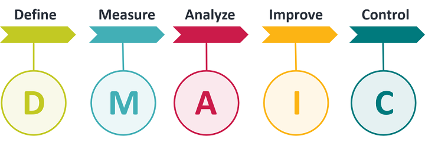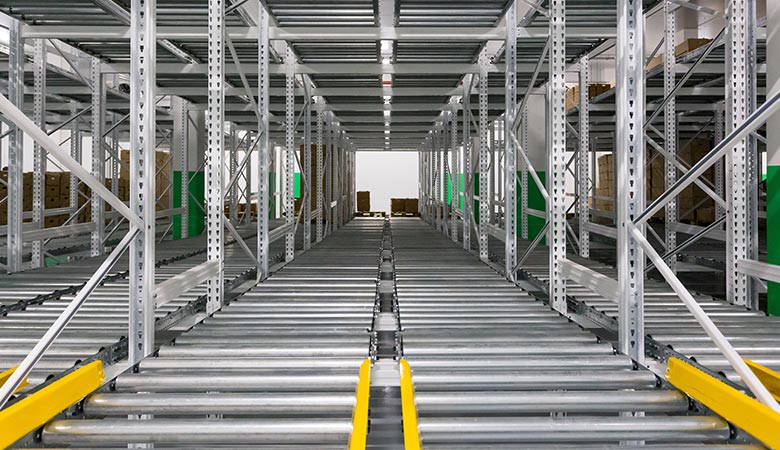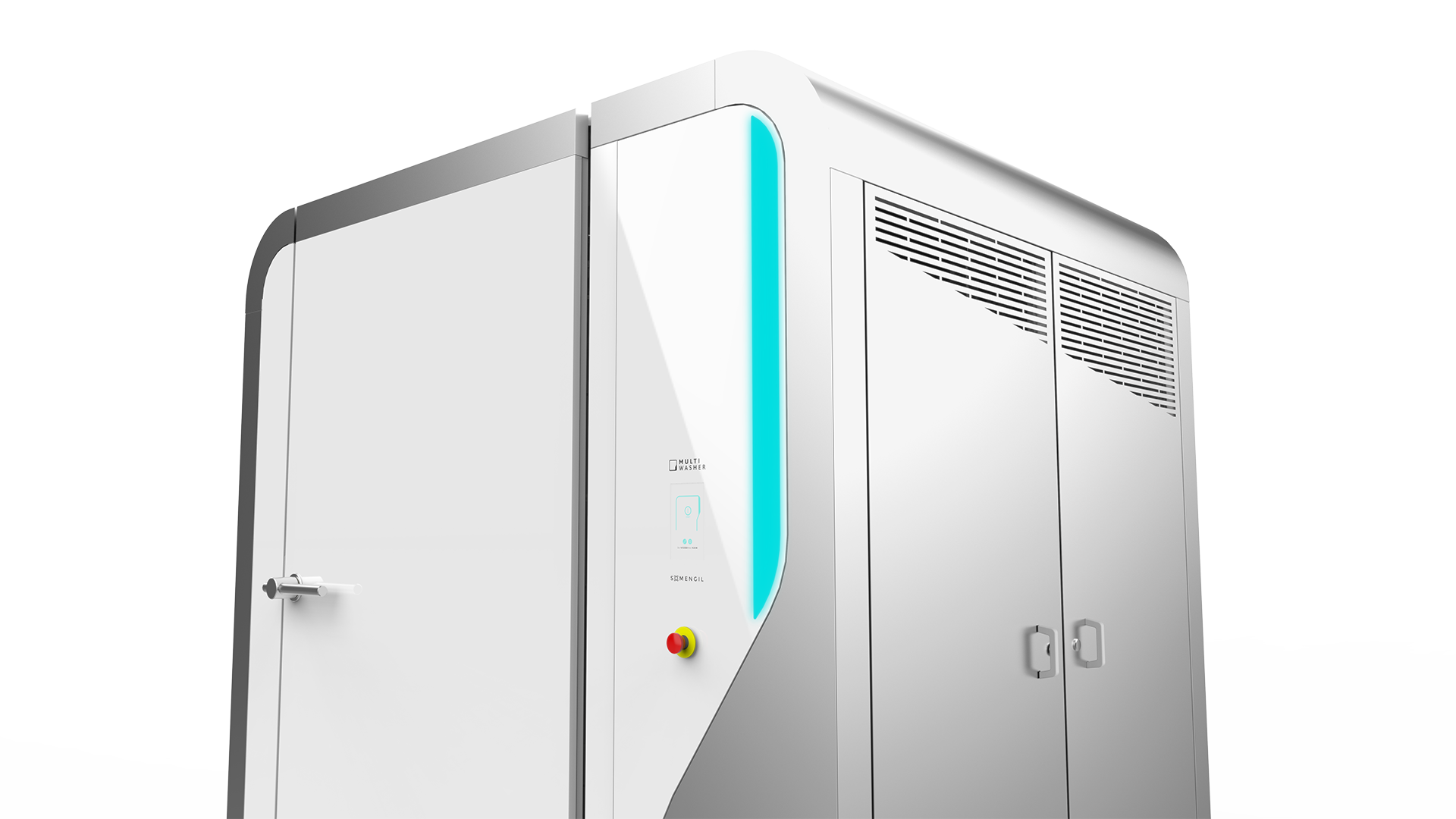Gestão / Artigos
DMAIC: what it is, what it is for, and how to use it
Reduce waste, solve problems, and improve processes. Learn about the DMAIC method and find out how to implement it in practice.

 7 minutos de leitura
7 minutos de leitura
2023-03-30 17:00:02
In the late 1980s, National Geographic – one of the most respected brands in history with continuous publications since the 19th century – was experiencing serious problems reaching new audiences. The executive team had a solution: enter the world of cable TV and create a new channel, called National Geographic TV. But when they presented the plan to the board of directors, the reaction was not what they expected. The administrators didn’t know what problem the proposed solution was supposed to solve.
In hindsight, the confusion was understandable. The executive team did not detail the extent of the challenges of creating a new TV channel, nor did they make clear the link between this innovation and attracting new paying subscribers. Instead of seeking approval for the new channel, they should have discussed how best to make the brand more appealing to a younger audience or, more broadly, how to get the customers they needed given the growing competition. In the end, the project did not move forward – but a few years later, two new competitors emerged. The Discovery Channel and the History Channel, both with similar concepts, ended up materializing the concept and reaching record audiences for several years.
Cases such as this fill pages of management books, entries in a long list of companies that missed historic opportunities. And while each case is different, few doubt that problem-solving strategies and tools can help make better business decisions and deal with challenging scenarios. These tools, of which DMAIC is one of the most popular examples, focus on identifying the relevant variables in a difficult situation and mapping out possible solutions. With a structured 5-step approach to solving complex problems, DMAIC is field-tested in a wide variety of industries and sectors. Learn what it is and how to apply it.
What is DMAIC?
To find better answers, you need to ask better questions – something commonly referred to as “framing” the problem. Often overlooked, this step sets the trajectory for generating alternative options. This is a major focus of DMAIC, one of the main tools of Lean Six Sigma, and a fundamental first step for two reasons: it can reveal new possible solutions and avoid wasting time, money, and effort on incomplete ideas.
The main goal of this method is to structure problem solving with a focus on continuous improvement, through 5 well-defined sequential steps: Define, Measure, Analyze, Improve, and Control. It can be implemented independently, or with other quality management initiatives.

Font: Qualidados
Each step indicates specifically what to achieve and how, through a logical line of reasoning that makes it possible to analyze any problem and intervene directly on the cause.
What is DMAIC good for?
DMAIC is a continuous improvement tool specially designed to identify problems in processes and support their resolution. It helps to get a real and objective view of a given problem, and to check which variables contribute to its occurrence.
This tool also helps to create an action plan based on data. This is another strength of the DMAIC method, which devotes three out of five steps to the planning phase. The trick lies precisely in a greater dedication to this phase, to reduce the effort rate of implementation and the likelihood of failure.
Methodologies such as DMAIC are especially important if we consider that incorrect or incomplete problem formulation is one of the key obstacles to problem solving. Using structured problem-solving tools forces the whole team to go through a set of steps, supporting communication, and avoiding different interpretations about the problem to be solved, and the expected solution.
How to implement DMAIC, step by step
The DMAIC method proposes 5 well-defined and sequential steps that are easily applicable to any kind of problem and any organization.
1. Define
In this first step, it is necessary to define the problem or opportunity. To do this, start by identifying the current situation and how it compares to the desired situation. This includes listing constraints or limitations that might stand in the way of the desired outcome, and checking whether there are enough resources to achieve success.
2. Measure
The second phase involves a quantitative assessment of the current situation. Look for metrics that illustrate the problem and others that signal opportunities for improvement. This step will allow you to make an informed comparison after the improvements are implemented. Next, identify potential causes, filtering out those that generate the most impact on results. A good way to do this is to use the Ishikawa Diagram, also known as the Fishbone Diagram, to analyze the root causes.
3. Analyze
In this phase, analyze the data collected in the previous step. You can use statistical techniques to display trends and determine the root causes of poor performance that can be eliminated. Here you may find it useful to use the FMEA methodology, which is used to identify failures before they happen.
4. Improve
This is when solutions are implemented. It is important that the specifications are clear and that they are properly documented to be replicated later, if necessary. The 5S Methodology and the Kaizen Method are some of the most used tools in this phase to introduce rapid change to a project.
5. Control
Finally, and as the name implies, it is time to monitor and control the results to verify that they are achieving what is expected. The goal is to ensure that the problem does not occur again or, if it does, to ensure an immediate and effective response.
MultiWasher, technology to improve industrial washing
Using the DMAIC method is one of many ways to invest in quality management. But continuous improvement also involves relying on technologies that increase process performance.
In the specific case of industrial washing, companies can sanitize any type of utensil with the MultiWasher. This state-of-the-art machine has unprecedented performance, using the latest technology to make washing run autonomously, effectively, and efficiently. See the MultiWasher in action and find out how to improve the quality of your sanitation processes.
Também pode gostar

Gestão / ArtigosArtigos
The Kaizen Way: what it means and how to apply it
The Kaizen way is a unique approach to continuous improvement and operational excellence. This is what it’s for and how to implement it.
Postado em 2022-01-13

Gestão / ArtigosArtigos
What is industrial hygiene?
Industrial hygiene is an essential part of a happy, safe and productive workspace. But what exactly is this broad concept.
Postado em 2021-11-25

Gestão / ArtigosArtigos
Resource management: what is it and how to do it right
Learn how efficient resource management can enhance productivity, reduce costs, promote sustainability, and avoid unforeseen hiccups.
Postado em 2024-04-23






















 Português
Português English (UK)
English (UK) English (USA)
English (USA) Français
Français Español
Español Deutsch
Deutsch